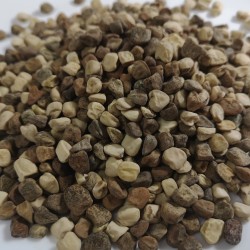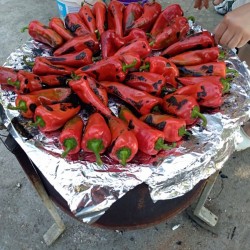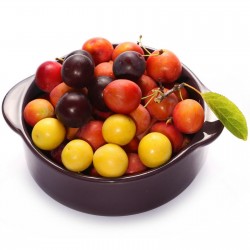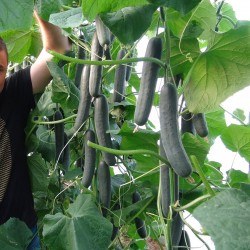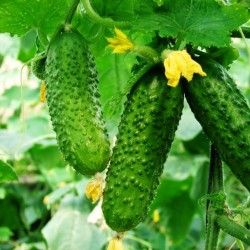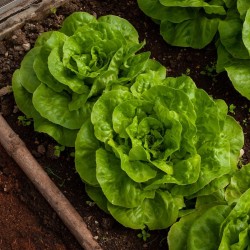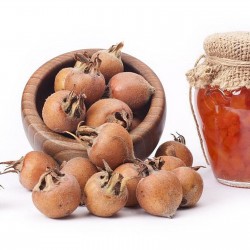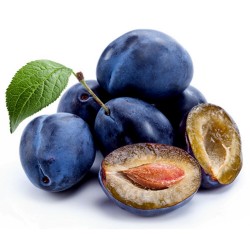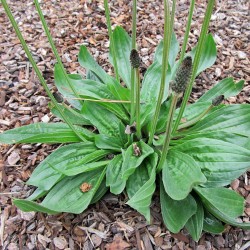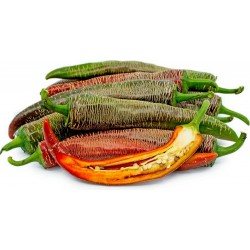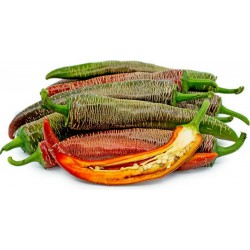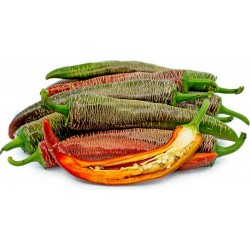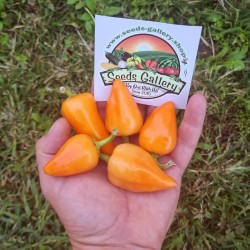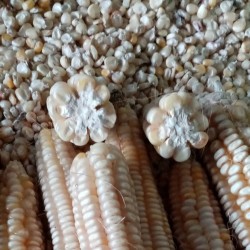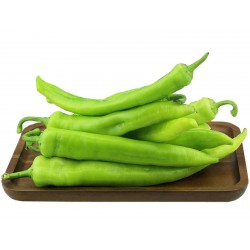Seeds Gallery EU,
5/
5
<h2><strong>Seminte de pătlagină (Plantago lanceolata)</strong></h2>
<h2><span style="color: #f80000;" class=""><strong>Preț pentru pachetul de 560 (1g) semințe.</strong></span></h2>
<div style="color: #666666; font-size: 16px;">
<div class="wsite-multicol">
<div class="wsite-multicol-table-wrap">
<table class="wsite-multicol-table">
<tbody class="wsite-multicol-tbody">
<tr class="wsite-multicol-tr">
<td class="wsite-multicol-col">
<div class="paragraph" style="color: #666666; font-size: 16px;">Pătlagina îngustă este o plantă medicinală cunoscută și utilizată în medicina tradițională și în cea științifică din cele mai vechi timpuri. Frunzele proaspete se aplică sub formă de cataplasme, pentru vindecarea rănilor. Siropul obținut din frunze de pătlagină prezintă o acțiune emolientă și antiinflamatoare și se folosește în tratamentul bronșitelor și, în general, în cazuri de inflamație a căilor respiratorii.</div>
</td>
</tr>
</tbody>
</table>
</div>
</div>
</div>
<div style="color: #666666; font-size: 16px;"></div>
<div class="paragraph" style="color: #666666; font-size: 16px;"> Principiile active din frunzele de pătlagină au, de asemenea, după cum prezintă E. Păun și colaboratorii, o acțiune antiinflamatoare și emolientă asupra tractului intestinal.<br><br>Lebedev-Kosov evidențiază faptul că frunzele de pătlagină sunt utilizate tot mai mult atât în medicina tradițională, cât și în cea științifică. Frunzele proaspete, sucul proaspăt, infuzia și decoctul prezintă o acțiune hemostatică, bacteriostatică, cicatrizantă etc. Halm releva valoarea terapeutică a frunzelor de pătlagină, amintind și de acțiunea fungistatică a principiilor active din plantă. Datorită proprietăților terapeutice menționate pătlagina este înscrisă în Farmacopeea a numeroase țări. În India, frunzele de pătlagină se utilizează chiar și în alimentația omului, iar în unele țări frunzele și semințele de pătlagină, bogate în proteine și ulei gras, se folosesc în amestec cu alte specii în hrana animalelor (Strong).<br><br><strong>Locul în asolament</strong><br>Pătlagina îngustă, fiind o specie perenă, se cultivă în afară asolamentului, în clinuri, în grădini, pe luncile râurilor, în asolamente furajere sau în asolamente speciale (Evdochia Coiciu și Racz). Nu manifestă cerințe deosebite față de planta premergătoare. Se poate<br>cultiva cu bune rezultate după plantele prășitoare, care lasă terenul curat de buruieni. Specia va reveni în același loc după cel puțin patru ani. Pătlagina îngustă nu se va cultiva după degețelul lânos, cu ale cărui frunze se aseamănă; degețelul este o specie toxică și trebuie evitat amestecul acestora.<br><br><strong>Fertilizarea</strong><br>Mayer a relevat faptul că îngrășămintele influențează pozitiv dezvoltarea și biochimismul plantei. Pătlagina absoarbe din sol microelemente, mai ales zinc (Bergher, citat de Viorica Cucu și colaboratorii). Deși este o specie rustică, reacționează favorabil la fertilizare. Îngrășămintele cu azot contribuie la sporirea producției de frunze, iar fosforul și potasiul echilibrează acțiunea azotului. Dozele de îngrășăminte se stabilesc în funcție de felul plantei premergătoare și de gradul de fertilitate naturală al solului pe care se cultivă. În general, se utilizează câte 40-50 kilograme/hectar din NPK. Îngrășămintele cu fosfor și potasiu se aplică sub arătură, iar cele cu azot, primăvara devreme. În anii următori de cultură (II-IV), în funcție de starea de vegetație, se poate aplica o fertilizare suplimentară. După unii autori, anumite îngrășăminte influențează pozitiv biochimismul și dezvoltarea plantei. Astfel, se afirmă că îngrășămintele cu potasiu dublează cantitatea substanțelor extractive. Microelementele influențează pozitiv procesele metabolice din plantă (Mayer, citat de Viorica Cucu și colaboratorii). Mileniseva și colaboratorii au experimentat fertilizarea extraradiculară a speciei Plantago Psyllium cu soluție de cobalt și molibden. În urma tratamentului, s-a constatat mărirea perioadei de acumulare a polizaharidelor, care ating nivelul cel mai ridicat în timpul înfloririi, după 45-52 de zile de la răsărire, lărgindu-se astfel perioada de recoltare a frunzelor.<br><br><strong>Pregătirea solului</strong><br>După recoltarea plantei premergătoare, dacă există suficientă umiditate în sol, terenul se ară la adâncimea de 22-25 cm, cu plugul în agregat cu grapa stelată. Până toamna, terenul se lucrează cu polidiscul, urmat de grapa cu colți reglabili, ori de câte ori se îmburuienează. Patul germinativ trebuie pregătit în cele mai bune condiții, astfel ca terenul să fie bine nivelat, mărunțit și tasat. Aceasta se poate realiza în condiții optime cu combinatorul. Înainte de semănat, terenul se tăvălugește cu tăvălugul neted sau inelar, pentru a limita adâncimea de încorporare a seminței.<br><br><strong>Modul de înmulţire</strong><span> </span>- pătlagina îngustă se înmulțește prin semințe semănate direct în câmp.<br><br><strong>Epoca de semănat<span> </span></strong>- este situată în pragul iernii, în luna noiembrie sau în ferestrele iernii, astfel ca semințele mici ale acestei specii să beneficieze de umiditatea acumulată în sol în timpul perioadei de iarnă.<br><br><strong>Distanţa şi adâncimea de semănat</strong><span> </span>- cea mai indicată distanță de semănat este de 50 cm între rânduri, pentru ca lucrările de întreținere să poată fi executate cu mijloace mecanizate. Deoarece pătlagina îngustă are semințe mici, acestea trebuie semănate superficial, la adâncimea de 1,5 cm (Evdochia Coiciu și Racz, 1962). Conform STAS 4776-82, semințele trebuie să se încadreze la puritatea fizică între 85 și 95% și la germinație - între 75 și 85%, limite minime prevăzute pentru semințele din clasele I și a II-a. Pătlagina îngustă se seamănă în condiții optime cu semănătorile SUP-21 sau SUP-29 prevăzute cu distribuitoare pentru semințe mici și cu limitatoare de adâncime atașate la brăzdare. <br><br><strong>Lucrările de întreţinere</strong><br>Pătlagina îngustă este sensibilă la îmburuienare imediat după răsărire. Din cauza acestui fapt, se va executa un plivit pe rând, iar dacă terenul este îmburuienat, este necesar și al doilea plivit. Intervalul dintre rânduri se prășește ori de câte ori este nevoie (se îmburuienează), pentru a distruge crusta și buruienile, mai ales în primul an de vegetație, când se vor executa minimum trei prașile. Toamna, cultura se mușuroiește ușor printr-o prașilă mai adâncă. În anii următori de vegetație (II-IV), cultura se grăpează energic primăvara. Mass propune combaterea buruienilor prin aplicarea unor erbicide recomandate de specialiștii agronomi în domeniu. Cercetările privind combaterea chimică a buruienilor din cultura de pătlagină îngustă, efectuate de Pank și Ennet, au evidențiat faptul că erbicidele ce se pot aplica acestei specii pot fi preemergente, se pot aplica la dezvoltarea deplină a frunzelor cotiledonate sau pot fi aplicate după prima recoltă, în primul an de vegetație. Aplicarea în serie a erbicidelor contribuie la combaterea buruienilor în proporție de 97%, iar munca manuală se reduce cu circa 87%. În urma analizei reziduurilor, s-a constatat că sunt puține erbicide care au efect de remanență, ce depășește limita admisă, din cauza persistenței substanței aplicate și a perioadei scurte dintre aplicarea produsului și recoltarea frunzelor.<br><br><strong>Dăunători. Boli. Combatere</strong><br>Nu au fost încă identificate boli și dăunători în culturile de pătlagină îngustă, datorită suprafețelor încă restrânse pe care se cultivă această specie.<br><br><strong>Recoltare</strong><br><strong>Epoca de recoltare<span> </span></strong>- recomandările privind momentul optim de recoltare, rezultate din diverse cercetări științifice sunt contradictorii. Mai mulți autori afirmă că în frunze conținutul maxim în aucubină se acumulează în perioada înfloririi. Astfel, Auster și Schafer, Elioh, Luckner și colaboratorii și Haznany subliniază faptul că aceste valori determinate înainte de înflorire cresc de la 0,60-1,10% la 2,80-3,20% în faza de înflorire, această fază fiind considerată ca optimă pentru recoltare. Alți autori (Crăciun și colaboratorii) afirmă că frunzele trebuie recoltate când ajung la lungimea de 12-15 cm, aceasta fiind considerată maturitatea tehnică. În concluzie, frunzele pot fi recoltate atât înainte, cât și în timpul înfloritului. Calendaristic, după autorii menționați, frunzele se pot recolta începând din luna mai, lucrarea repetându-se de 3-4 ori în decursul verii. Pentru obținerea de sămânță se recoltează cultura în al II-lea an de vegetație, în faza în care 70% din inflorescențe s-au brunificat, iar semințele au culoarea caracteristică speciei.<br><br><strong>Modul de recoltare</strong><br>Frunzele se recoltează cu secera, pe vreme uscată și senină, dimineața, după ce s-a ridicat roua. Tijele florale se înlătură pe măsură ce apar, pentru a favoriza formarea frunzelor. Producția de frunze posibilă este de 100-200 qintale frunze proaspete/hectar. Pentru producere de sămânță, inflorescențele se recoltează cu secera și se pun la uscat pe platforme betonate, apoi se treieră și se condiționează. Cantitatea de sămânță posibilă este de 300-400 kg/ha (Evdochia Coiciu și Racz).<br><br><strong>Prelucrarea materiei prime</strong><br><strong>Uscarea<span> </span></strong>- frunzele trebuie uscate urgent, deoarece acestea, dacă rămân în vrac mai multe ore, se depreciază prin înnegrire. Frunzele pot fi uscate pe cale naturală, la umbră, în spații bine aerisite, așezate în strat subțire. În uscător se vor usca la temperatura optimă de 40-50 de grade Celsius (Crăciun și colaboratorii).<br><strong>Ambalarea, păstrarea</strong><span> </span>- după uscare, frunzele se ambalează în saltele de pânză rară și se păstrează în încăperi curate și uscate.</div>
<script src="//cdn.public.n1ed.com/G3OMDFLT/widgets.js"></script>
VE 216 (1g)

